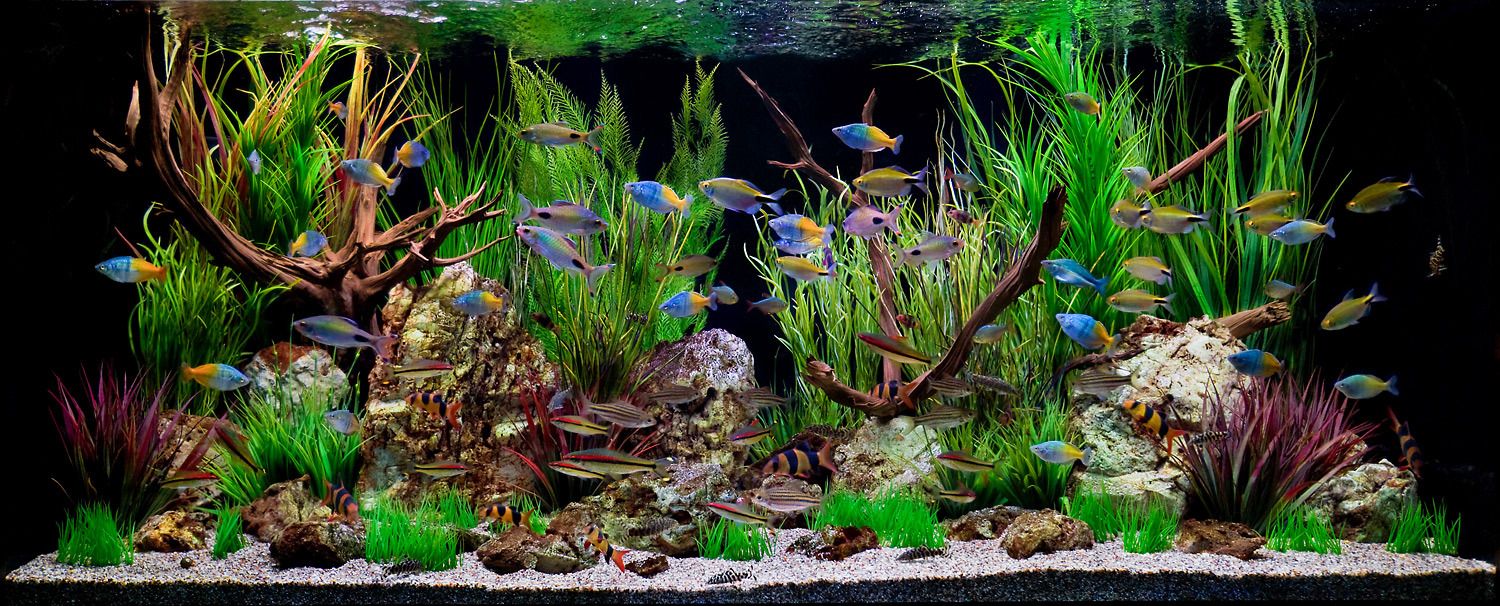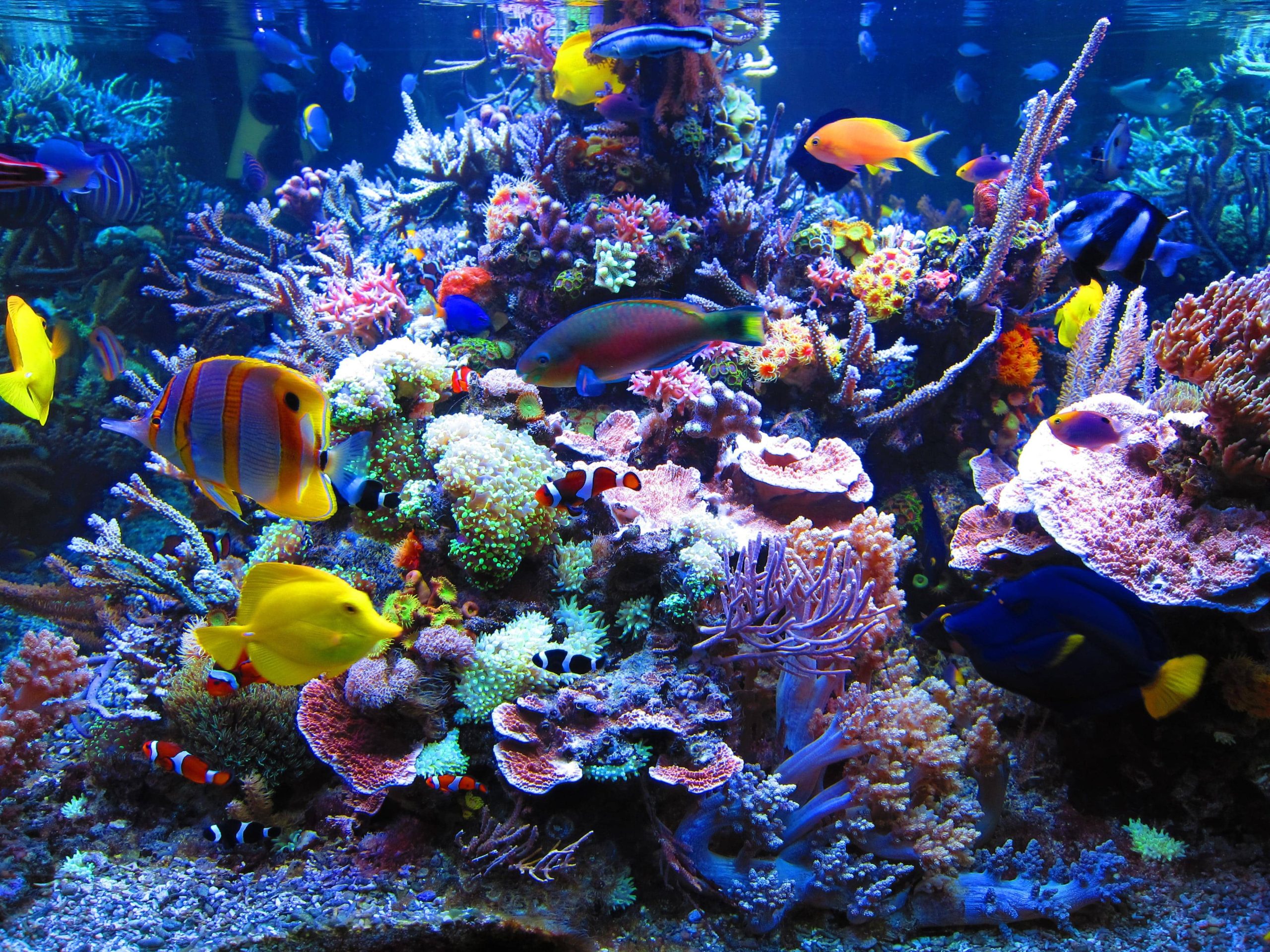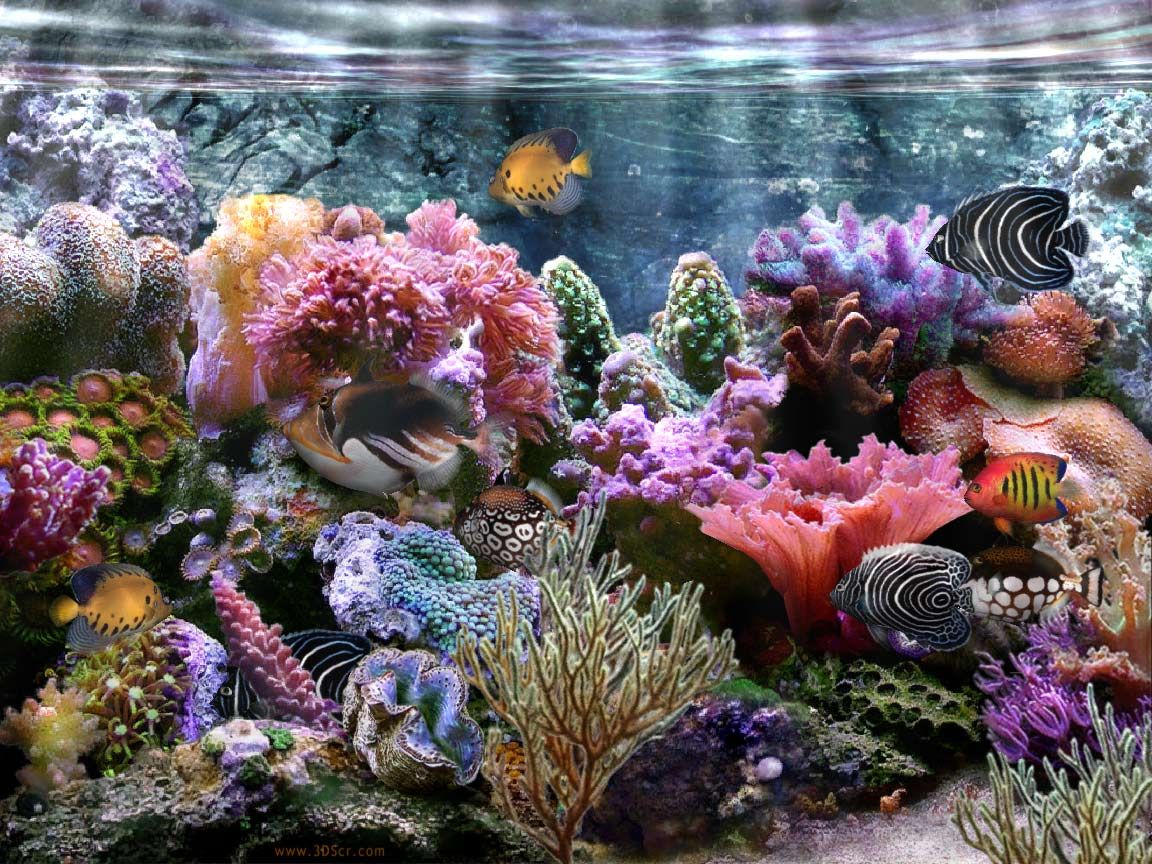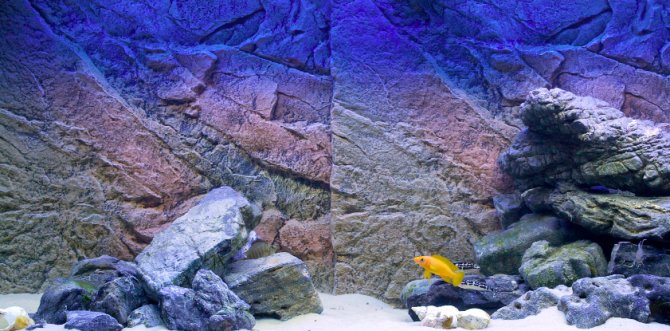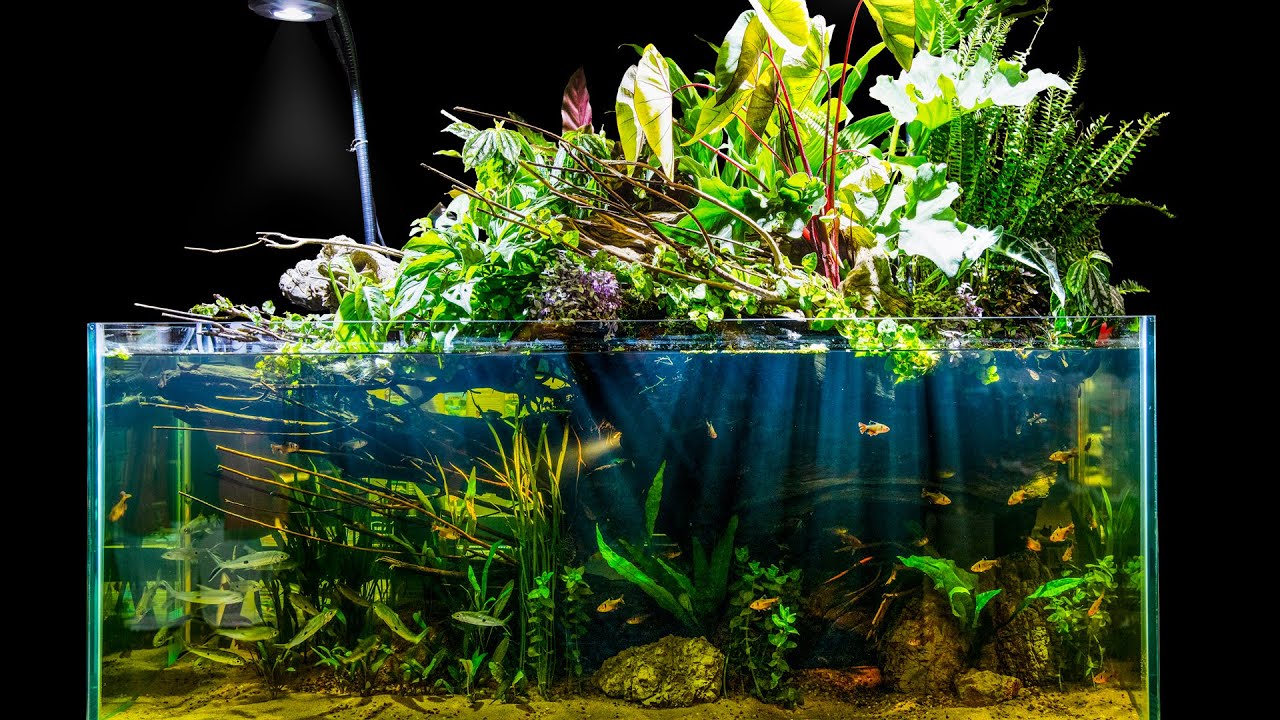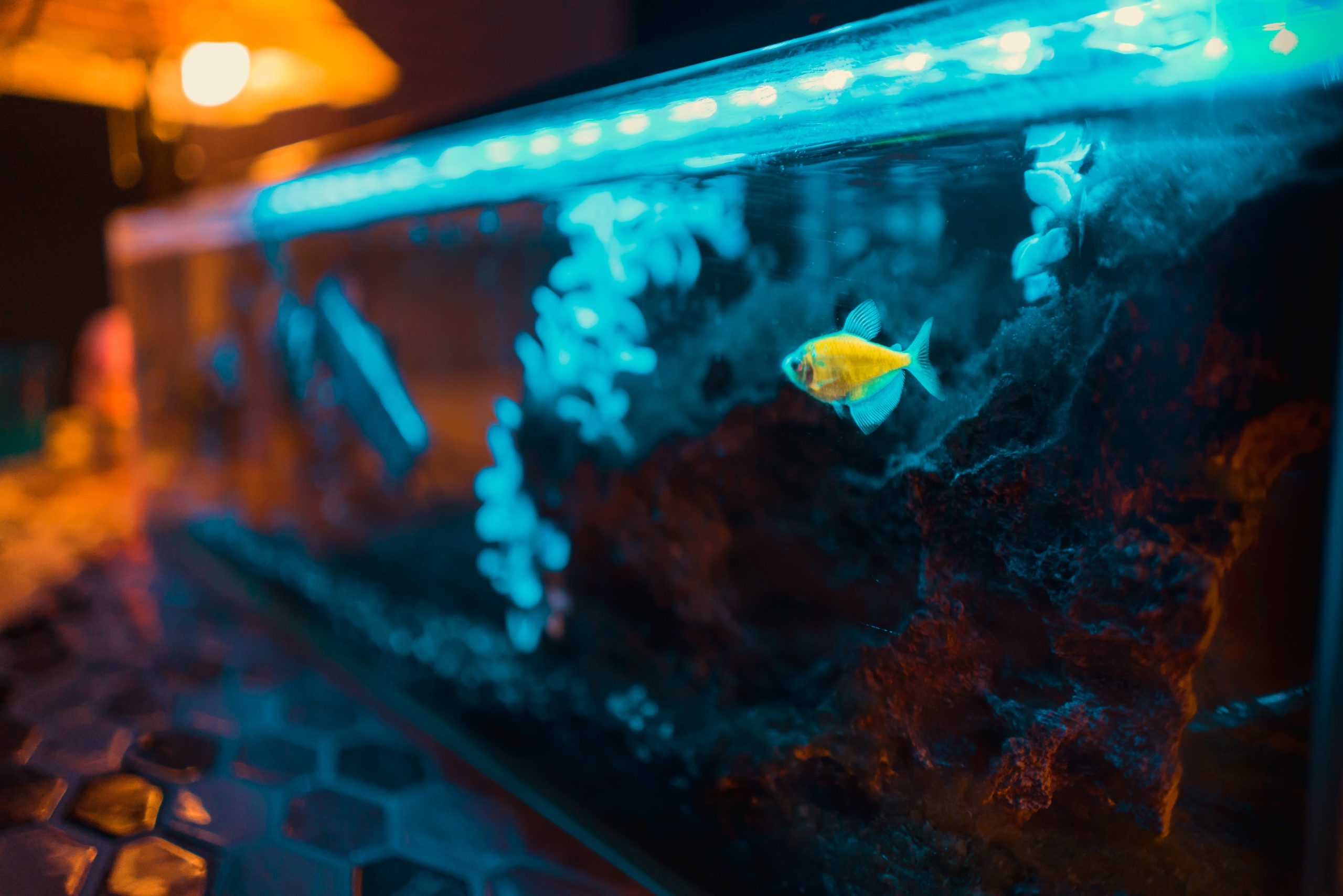It’s an all too common occurrence, a new aquarist gets this brilliant idea to rush out and buy a new aquarium, set it up, and go straight to adding fish. This new aquarist has a beautiful new aquarium for about a week and then it happens, the aquarium begins to cycle and the fish begin to die. Before long, this aquarist is discouraged and has given up, packed up the aquarium, and now it’s sitting in a closet waiting on warmer weather so it can be sold in a garage sale. Sadly, all of this could have been avoided if they had just done a little bit of planning.
The Basics
Since you are reading this article, we’re going to assume that you are making the right decision and doing your homework before you rush into a new aquarium.
The first thing you need to do is sit down with a pencil and paper and plan out what you want to achieve with this aquarium; will it be fresh or salt water, and what type of inhabitants do you want? Once you have determined that, you should get books and do research on the Internet to determine what is involved in caring for the particular type of aquarium that you are interested in. While you are doing this research, you should take note of any specific types of equipment that are mentioned as being important for a particular type of aquarium.
Once you have done some basic research on aquariums and specific types of fish (or invertebrates), you can begin to visit local aquarium stores and obtain prices on the necessary equipment. You should find a dealer who is willing to spend time with you and help you to determine exactly what fits your needs. If the dealer only seems interested in your money and doesn’t seem to care about getting you set up with an aquarium that suits your needs, move on to a different store that will be more helpful as you pursue your new hobby.
By now, you should be forming a general idea of what equipment this new aquarium will require and what kind of budget it will take to set it up. When you are confident that you have decided what aquarium and equipment you need, you can begin purchasing them. Don’t, however, buy fish for this new aquarium yet. After you set the aquarium up, it will undergo a chemical cycle that can be very stressful and often deadly to the fish. Use a chemical test kit (can be purchased at any fish store) to determine when it is safe to purchase fish. As a rule of thumb for the marine aquarium, wait until ammonia, nitrite, and nitrate levels have fallen to zero before adding any fish. Once the chemicals in your aquarium have reached safe levels then proceed cautiously in adding fish. Start with more hardy fish, watch to ensure their good health in the new aquarium, and then slowly proceed to more fragile fish.
As a new aquarist, it will be hard to resist the urge to jump off into the hobby head first, but the reward will be well worth the wait. Do your homework first, proceed with caution, and then enjoy the rewards.
Start Right With Tropical Fishkeeping – helpful tips when starting with tropical freshwater fishes
Now, we assume you are going to start with a freshwater aquarium. Freshwater tropical fish, as their name suggests, originate in freshwater rivers and lakes in the warmer parts of the world, particularly in South America and Central Africa.
There are literally tens of thousands of species of freshwater tropical fish, with new ones being discovered almost every day. With such a vast variety of fish, each living in its own particular environment, it’s easy to see why fish keepers are never lost for new areas to study and new challenges to enjoy.
Fish Names
All fishes are classified by the ‘binomial system’ (two names). First, there is the family or generic name -which should always be written with an initial capital letter. This is followed by the species name/s – which should always all be written in lowercase letters, (both names ideally all in italics).
Thus Barbus Tetrazona and Barbus Oligolepis are two different species within the genus Barbus. Most fish do, however, also have an easier common name. Barbus Tetrazona, for example, is commonly known as the Tiger Barb or Sumatra Barb.
There are over twenty families of commonly kept freshwater tropical fish and within each family, there can be thousands of species – often living in widely differing environments. The family Cichlidae (Cichlids), for example, are thought to have over 1,000 different species existing in the great African lakes alone.
The main families
Whilst there are over twenty families of freshwater tropicals, most fish of interest to the aquarist are members of one of the following eight families:
Family Anabantidae
Anabantoids are generally distinguished by the fact that they have a ‘labyrinth chamber’, a special organ that enables them to breathe atmospheric air, which they must have in order to survive. Native to the waters of South East Asia and Africa, most of the family have ‘feelers’ – modified ventral fins – which they use to detect food in murky waters. Most also create a ‘bubble nest’ for spawning. Examples of the family include Gouramis, Siamese Fighting Fish, and the Paradise Fish.
Family Callichthyidae
Better known as catfish – probably the most popular tropical fish amongst hobbyists. Whilst most are hardy, adaptable bottom feeders they require occasional gulps of air to help supplement their gills. Catfish are also nocturnal and do best in a subdued light. Corydoras, one of the most popular aquarium species, have a bony plate along the side of their body. Other catfish have suckered mouths which enable them to fix onto rocks in the wild, which they use to graze algae from the side of the aquarium glass.
Family Characidae
Characins are one of the largest families of freshwater tropical fish, originating from Africa, and North and South America. All Characins have teeth but are without barbels or whiskers. Many also have a small extra adipose fin on the top rear of their body. Because of their schooling habit Characins, such as Tetras, are often kept in numbers in single-species tanks.
Family Cichlidae
Most Cichlids are carnivorous and territorial and have a reputation for being aggressive. Many species are, however, very popular and ideal for aquariums. The family occurs naturally throughout North and South America and throughout most of Africa, especially in the great lakes of Malawi and Tanganyika.
Family Cobitidae
Known commonly as loaches, this is a family of bottom-dwelling fish. Their mouths have feelers to help locate food and their bodies often have defensive erectile spines. They are widely found in Asia, Europe, and in parts of Africa.
Family Cyprinidae
Although a large family of fishes, Cyprinids, which include Barbs, Rasboras, Danios, and Minnows, generally have barbs that allow them to sort food from the bottom. The family also includes cold water species such as Goldfish as well as those who need the warm tropical waters.
Family Cyprinodontidae
Found in Africa, North and South America, and Asia, this is the family of Killifishes or Egg Laying Toothcarps. As they are sometimes predatorial on smaller fishes, care must be taken when introducing them into a community tank. They prefer slightly acidic water.
Family Poecilidae
This is the family of the Live Bearing Tooth Carps – small fishes such as Guppies, Platies, Mollies, and Swordtails. As the name implies, this family produces live young that are capable of swimming and feeding just after birth.
Choosing your Fish
There are two main areas which you need to consider. First, there is a limit to the number of fish your aquarium can sustain without putting pressure on the Oxygen levels in the water and the level of pollution that fish create. You must also remember that fish grow and, as they do, will put even more pressure on their environment. The best advice is always to start off with just a few fish and add more over a period of several months. As a rough guide, allow about 20 inches of fish combined body length for each square foot of surface water. For a tank 3ft long x 1 ft (3sq.ft.) wide, you should not exceed 60 inches of fish.
The second consideration is the habit of fish. In their natural habitat, fish lead very different lives, and these natural habits will show themselves in your aquarium. In a community tank, you might, therefore, wish to have fish that live and feed at all levels – top feeders, such as Mollies, mid-water feeders, such as Barbs, and fish that live and feed on the bottom of the tank, such as Catfish.
Buying Your Fish
Buy locally if possible. Long journeys and a fall in water temperature on the way home can easily stress your fish. Should you later have problems, it is also much easier to resolve them if your fish supplier is nearby.
Choose an aquatic retailer with good stocks and a wide variety of fish – they are more likely to have specialist knowledge. Check that the fish have been properly quarantined before the sale. Disease often takes a few weeks to show, and a fish not quarantined can easily introduce diseases that infect all your fish.
Look at the fish carefully. Check that they are swimming peacefully and not rubbing themselves against the tank glass – often a sign of infestation.
Introducing fish to your tank
You should, of course, only introduce fish into the water, which is mature and free of chlorine. Also, check on the water temperature.
Before you let the fish free, float the opened plastic bags on the surface of the tank for about 20 minutes to equalize the water temperature and reduce the stress on the fish. Fish which are just introduced into a new tank may be nervous and hide away. Leave them for a few hours to get used to their new surroundings. After that time, give them a few tropical fish flakes.
Ask the retailer as many questions as you can muster. Do the fish like alkaline or acidic water? Are they compatible with the other fish you are thinking of buying? Do they have any special habitat needs, such as caves? How large do they grow? Most specialist aquatic retailers are very knowledgeable and are always happy to give advice.
Feeding the Fish
To stay healthy, fish need a range of nutrients. The best and easiest way of providing these is in a completely balanced diet, such as flaked fish foods.
Summing Up: How to Set Up a New Freshwater Aquarium in 7 Easy Steps
Setting up a new aquarium may seem simple enough, add gravel, water, filter, fish, and your new aquarium is done. If you want your new aquarium to flourish with as little maintenance as possible and your fish to be healthy and happy, you will have to do a little more. With a little extra effort and time, you can get your new aquarium off to a good start and keep future maintenance down to a minimum. Below are some steps you can take when setting up your new aquarium to accomplish this.
1) Wash the aquarium with mild soap and rinse thoroughly. Do the same for any filters, artificial plants, or ornaments that will go in the aquarium. Rinse the gravel thoroughly with fresh water to flush out any debris that may be present.
2) Put in an under-gravel filter with a small power head attached. This can be hidden with some plants or rocks. The power head will help keep the gravel clean by pulling the debris down to the bottom of the tank, and it also turns your gravel bed into a large biofilter. In addition to the under gravel, the filter uses an outside power filter to take out the particle waste floating in the water and to hold a resin-based filter medium for chemical filtration (Chemi Pure). Under normal conditions, an occasional rinsing of the outside filter medium and replacing the water lost to evaporation is all that is needed, with the possible exception of an occasional partial water change. Depending on fish population and feeding habits, you can greatly reduce the frequency of water changes with this setup.
3) Add a 2″ layer of gravel over the filer bed and fill the tank with water. Place any plants and ornaments you would like to use in the aquarium at this time. Allow the filter system to run overnight before adding liquid filter bacteria (available from pet suppliers) to the tank to promote a new and helpful bacterial colony to get established. Do not add any fish in the first week.
4) Add a few fish from a hardy species that you intend to keep in the aquarium first. Feed only once per day until the bio filter is established. The waste the fish produce will help feed the beneficial bacteria, therefore keeping the ammonia and nitrate levels to a minimum. Continue to add a few more fish each week until you have reached your desired population. Doing it in stages allows the bio filter to grow and adjust to the increased fish load gradually.
5) Install a quality aquarium heater. Two of the tank is over 30 gallons in size. Multiple heaters help insure even heat distribution in larger aquariums.
6) Install a background or paint the rear of the tank. A bareback aquarium is not the best arrangement for your fish. The background helps them feel more secure in their environment.
7) Monitor the progress of your new aquarium’s bio filter by testing for ammonia levels at regular intervals. If a rise is noticed, withhold any feedings for a day and do not introduce any new fish until the levels return to normal. Adding too many fish at once will overload your aquarium’s bio filter and the ammonia and nitrate levels will shoot up, possibly killing your aquarium’s inhabitants. This is called new tank syndrome and must be avoided for the sake of your fish.
Tips: With a normal fish load based on tank size, partial water changes can be performed once a month. This assumes you’re using a resin-based filter medium.
Resin-based filter mediums are superior and more cost-efficient when compared to a good grade of carbon. They can last for 6 months or more, depending on tank size and load.
When you are cleaning the filter medium, dip it in some of the siphoned-off aquarium water to clean it with. This will prevent the destruction of the beneficial bacteria present.
If possible, use a GFCI outlet for all your aquarium equipment for protection against electrical shock.
If you use an air pump in the aquarium, put a check valve in the airline in case the diaphragm ruptures. This will prevent the pump from acting as a siphon and flooding the area around the tank.
Quick Check List for Setting up a Freshwater Fish Tank
- Pick tank wanted
- Verify tank has no leaks, cracks, or any other faults that could cause tank failure.
- Verify tank is clean and disease-/toxin-free (previously washed, sterilized with bleach, and rinsed).
- Set up the tank in the display location. Position the tank with water, electricity, air, and a drain nearby.
- Verify tank stand will support the weight of the tank plus contents (substrate, water, etc.).
- Verify tank is level.
- Verify nothing is under the tank that will crack it or cause tank stress when substrate and water are
added.
- Choose substrate.
- Choose particle size, particle shape, type, and amount (to give the wanted depth) of the substrate.
- Thoroughly wash the substrate (until the wash water is relatively clear).
- Choose aquascaping.
- Thoroughly soak, and wash any aquascaping materials to leach toxins.
- Remove organics that will quickly decay; slowly-decaying organics, such as driftwood, etc., may require
fairly frequent water changes, depending on tank volume and rate of decay.
- Choose live plants (if to be employed) and determine the lighting (duration, intensity, wavelength) needed to maintain plants.
- Add under gravel filter, if using this type of filter, or another filter type.
- Add substrate and level (if not level, the water circulation will go through the thinnest parts or paths of least resistance, and you will have “dead zones” in an under-gravel filter system).
- Add tank water to be used, and adjust to the salinity (or freshwater) desired.
- Turn on the air/filters and circulate the tank water until it clears.
- Connect up any UV light sterilizers, ozone units, diatomaceous earth or sand filters, and protein
skimmers, and verify working correctly. - Add the lighting desired and set the lighting cycle.
- Add live test organisms (guppy, etc.) and note their survival to verify no toxins in the tank.
- Seed tank. Seeding is done before the addition of plants and aquascaping so that seeding material does not get on plants and aquascaping and causes more cleaning work. Turn off sterilizers, ozone, and skimmers (leave air and filters running) until bacteria from seeding are drawn into filters (1-2 days). Seeding can be done before or after the small test organism, which produces little ammonia, is used.
- Add aquascaping.
- Add plants; verify plants contain no predatory insect larvae (dragonfly, damselfly, etc.).
- Verify all tank support systems are working.
- Add tank occupants (after healing from collection/transport damage and after verifying they appear to be disease-free) shortly after seeding so biological filter bacteria are fed fish wastes and thus are maintained.
- Add a light-transmitting tank cover to keep fish from jumping out of the tank to decrease aerosols from escaping the tank, and to decrease air-borne toxins from settling in the tank.
After the tank is set up:
- Monitor ammonia, nitrite, nitrate, pH, etc. levels until satisfied tank biological filter is well established,
then do periodic water quality testing. - Adjust airflow, water flow, and lighting cycle to get the desired display effects.
- Observe animals and plants closely for problems.
- Do periodic water changes.
- Do not feed animals for a few days, or do light feeding for the first week.
- Never overfeed animals.
- Remove any excess food and dead animals or plants as soon as possible to avoid fouling and disease. –Adjust lights (duration, intensity, wavelength) and light cycle to lessen algae growth.
- Remove overly aggressive animals.
- Do a daily tank check to verify all is going well.

